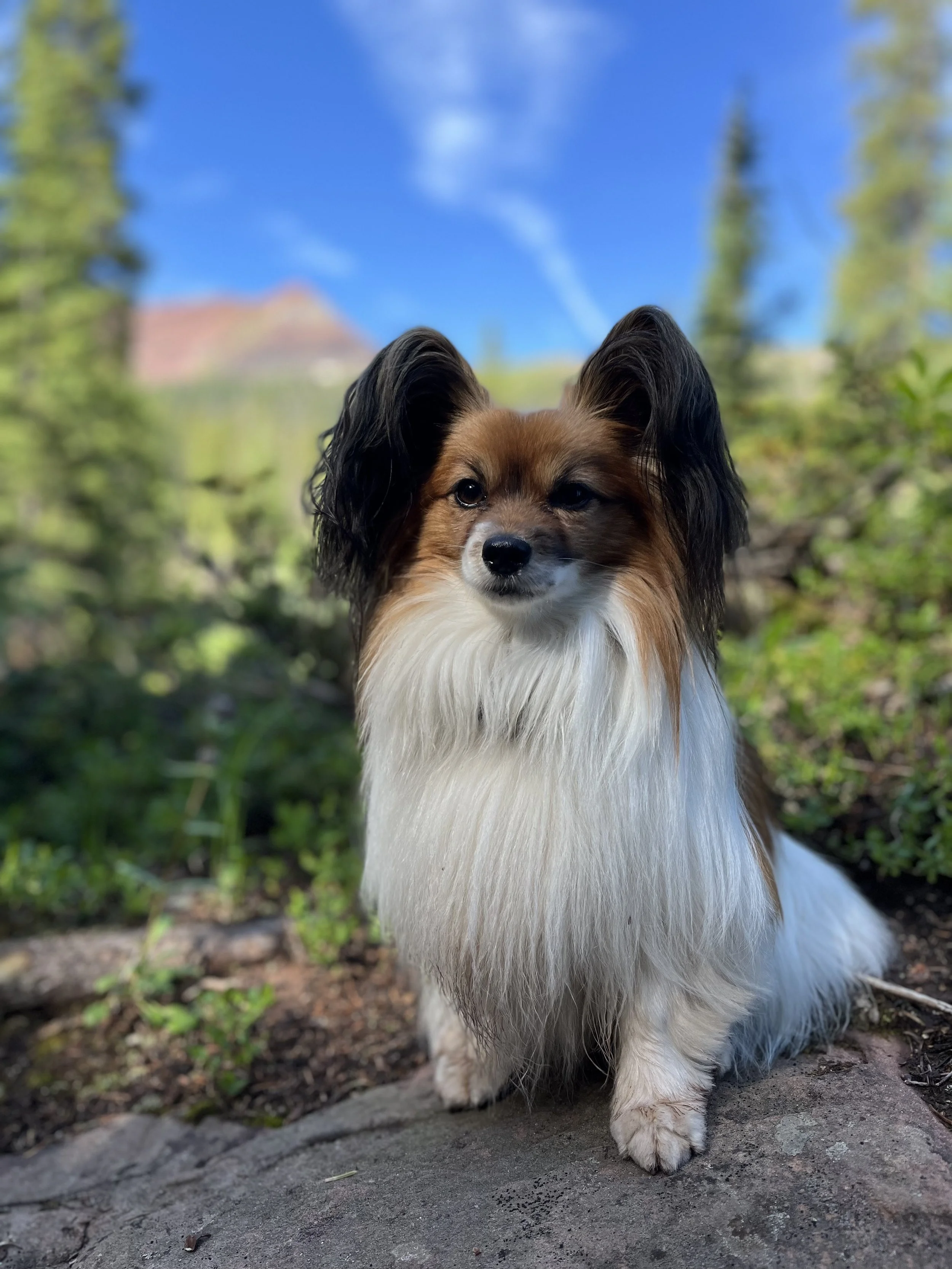Consent Petting
By Benah Stiewing
There are few things better than cuddling up with your dog - simply petting a dog is scientifically proven to increase our oxytocin (a chemical that increases happiness) and decrease cortisol (a chemical that produces stress). However, it’s easy for us to forget that the fluffy, adorable dog in front of you also has needs and desires, and may prefer to be touched in certain ways at certain times, or not touched at all. Consent petting is the practice of reading your dog's body language to determine if, when, and how they want to receive physical affection. This practice is about promoting autonomy and choice in your dog, and can be extremely helpful for more shy or nervous dogs. When we give an animal the ability to choose something, rather than use force, we are showing the animal that we listen to them and will respect their needs.
As a general rule, if you touch your dog in a certain way and they move away from you, it’s safe to assume they didn’t want to be touched like that at that moment. However, just because your dog moves away once doesn’t mean they never want to be touched that way! You may love hugs from certain people at specific times, and other times want nothing of the sort. If your dog reliably moves away from you when you touch them in a certain way, you can assume that sort of touch is unwelcome, but if it only happens at certain times it’s possible they don’t like any touch under those circumstances.
There are a few key forms of communication you can look for! These behaviors are often described as calming signals or cut-off signals, as they generally communicate a dog’s desire to pacify some form of perceived/felt stress or conflict. If you notice your dog practicing these behaviors during an interaction, consider pausing your action and giving your dog a moment to themself. These behaviors include:
Lip licking: dog licks their lips or flick their tongue out from their mouth.
Yawn: dog yawns, sometimes with their lips more curled back.
Turning away: dog turns their head away from the person/dog that is making them nervous.
Raised paw: dog slightly raises a front paw.
Stiff body: dog’s muscles tense and movement slows.
Tail raised: dog’s tail goes half-mast or slightly higher, maybe with a slow wag.
Shake off: dog shakes off entire body.
Now that you’re familiar with some basic communication signals, it’s time to get started with consent petting! Obviously, your dog cannot say “Yes” or “No,” but they can use their proximity to a stimulus to let us know how they’re feeling.
When your dog places themself within an arm's distance from you, use your hand to scratch their neck, under their chin or behind their ears.
It's always better to go under, than over! Reaching over your dog's head can be uncomfortable for them.
Scratch them 2-3 times, and then stop and move your hand back onto your lap.
If they stay where they are or move away from your hand, don't pet again.
If they lean in, nudge you, or paw towards your hand, repeat the above steps for another few scratches.
Repeat!
As you get to know your new dog, you can learn if they like to be touched, how they like to be touched, and how they cmmunicate wanting or not wanting physical affection.
In general, if a dog is moving away from you, that's a good indication to stop, and if a dog is moving towards you, that's a good indication to keep going.
Want to dive deeper into canine body language and communication? Consider watching our webinar, Learning Your Dog’s Body Language! This webinar provides a detailed, holistic approach to understanding your canine best friend.
Summit Dog Training offers group dog training classes & private lessons in Fort Collins, Colorado, as well as online self-study courses & online private lessons for education on how to live the best life with your dog! If you are looking for more training support, please don’t hesitate to contact us! We’d love to help you and your dog get ready for any adventure.

